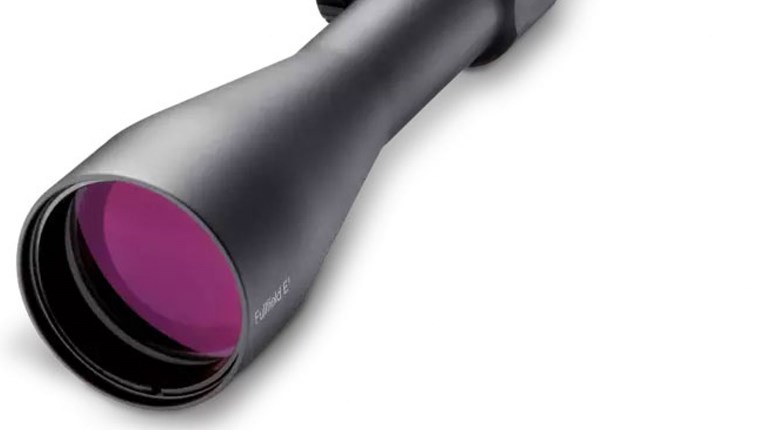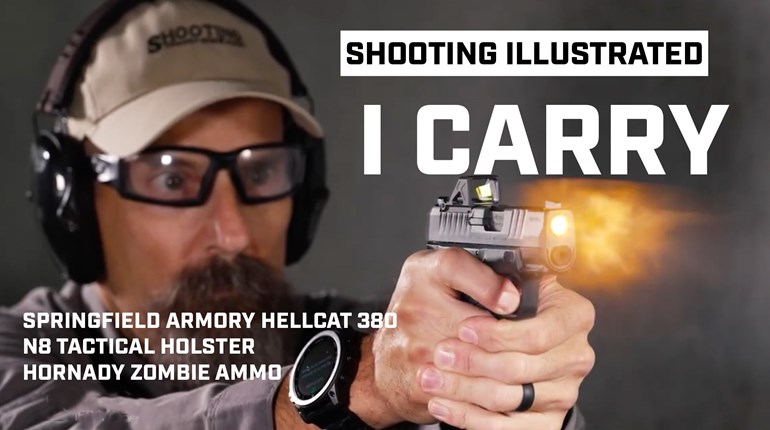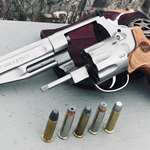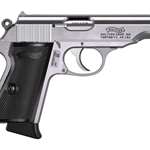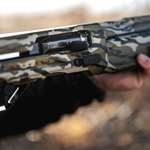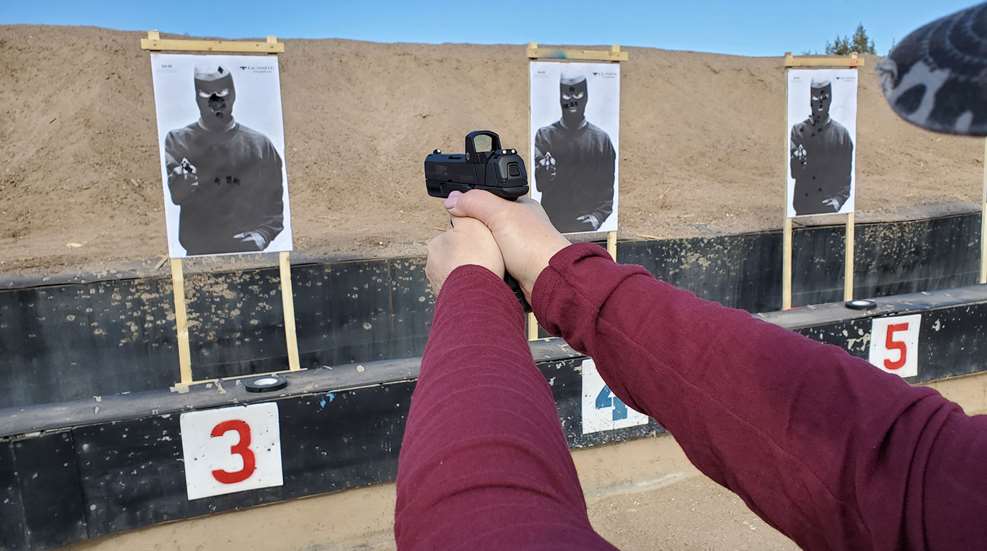
I’ll be the first to admit that my weakest shooting discipline is handguns. But after a recent handgun training course in which our Mossberg MC2sc pistols were outfitted with Holosun red-dot sights, I was pleased to finally see some marked improvement in my accuracy and speed. While the gun is excellent, most of the credit for my tighter groups goes to the red-dot—so much so that I am currently shopping for one to put on my concealed-carry handgun.

Whether you’re a concealed carrier or a range junkie (or both), you might want to consider putting a red-dot sight on your handgun. Why? I’ve got four reasons.
1. Red-Dot Sights Are Faster Than Irons
Iron sights require a visual connection in three places at three different distances at once. Your eye will hard-focus on the front sight, while the rear sight must be aligned in the foreground and the target must be lined up in the background, out of focus. All three must be aligned and you must “see” all three, but you can only look at one (the front sight). With a red-dot sight, you only have to worry about two points of alignment: The target and the dot. You’ve made it 33 percent easier to get a good sight picture just by eliminating one point of visual connection, and this makes it much faster to get on target.
Red-dots are just plain faster (and easier) because the concept is simple: See the dot, shoot the target. If you can see the dot on your target, no matter where the dot is in the window, the gun will shoot where the dot is. You don’t have to worry about if you’re canted or if your body is off-center or if the dot is perfectly centered in the window. Put the dot on the target and pull the trigger.
2. Red-Dot Sights Are More Accurate Than Irons
Although my personal experience can vouch for this, I’m not basing this assertion on anecdotal evidence. A 2021 white paper by Sage Dynamics details a study in which participants fired 130 shots, slow-fire, at a distance of 15 yards, with iron sights and then with red-dot sights. With iron sights, the target hit percentage was 75 percent. With red-dots, the hit percentage was 98 percent. Similar results were duplicated at different distances and different rates of fire. The vital zone hit percentages went from 30 percent with iron sights to 78 percent with red-dot sights.
That streamlined alignment mentioned above is a big part of what makes red-dots more accurate, in general, than iron sights. Reducing the need for perfect alignment and reducing the number of focal planes you must contend with reduces the human error you can introduce into aiming. Less error equals better accuracy.
3. Red-Dots Let You Focus on the Target
Because your visual focus isn’t zeroed in on a tiny front sight relatively close to your face, and the red dot does not need to be in a precise location within its window, you can keep your focus where it naturally wants to be: on the target. This might not make a big difference one way or another at the range, but in a self-defense situation, it’s everything. A charging bear or a threatening bad guy is just screaming for your full attention, and with a red-dot sight, you have a wider field of view and don’t have to shift your focus to the front sight. See the dot on the target and pull the trigger. No futzing around looking at something else when every cell in your body is screaming “Don’t take your eye off that threat!”
4. Red-Dots Are Great in Visually Challenging Situations
Young shooters might not need to worry about this yet, but if your eyesight isn’t what it once was, this point might hit home for you. Aging eyes might find a red (or green, if you prefer) dot much easier to see than the tiny white dots or lines that make up iron sights. Even if your vision is flawless, a glowing red dot will be easier to find in dark conditions than iron sights, particularly if your iron sights aren’t the glow-in-the-dark variety. If you can’t see them in the dark, how do you plan to aim at your target? A red-dot sight eliminates the nighttime problem.
Now, a Few Caveats
This article isn’t a slam on iron sights—they’ve served us well for hundreds of years and will continue to do so. You absolutely need to know how to shoot iron sights even if you put a red-dot sight on your handgun.
As mechanical devices, red-dot sights are subject to failure. They can be broken. Batteries can die sooner than expected. The sun can hit it at exactly the wrong angle and make the dot hard to find. Stuff happens! For this reason, I recommend co-witnessing your red-dot sight with your iron sights so that you can use irons if the red-dot goes down.
Battery life is pretty great these days, and most red-dots can be left on for a couple of years at a time and still have juice left. But to be cautious, I recommend changing the batteries on your red-dot once a year. Set a reminder on your phone’s calendar or pick a date you’ll remember, like your birthday, to swap out the battery.
It’s important to understand that although the points of alignment are reduced, your eye still has to line up with the sight in order for the red dot to be visible. This can be a problem for new shooters who are still struggling with a consistent gun presentation. If your hand is cocking the gun downward or upward or you’re presenting the gun higher or lower than eye level, you might see an empty window with no dot in it. This makes it extra important to practice your target presentation with an unloaded handgun so that you present your gun the same way, with the same grip and at the same angle, every time. Then at the moment of truth, you’ll pull the gun up and the dot will be where it’s supposed to be.
Lastly, no matter how much we all wish this wasn’t true, there’s genuinely no substitute for practice. Although it’s true that you can’t buy skill by purchasing new and better gear, a red-dot sight really can make you a better shooter if you’re willing to put in the time and effort to practice with it and integrate its use into your skillset.












